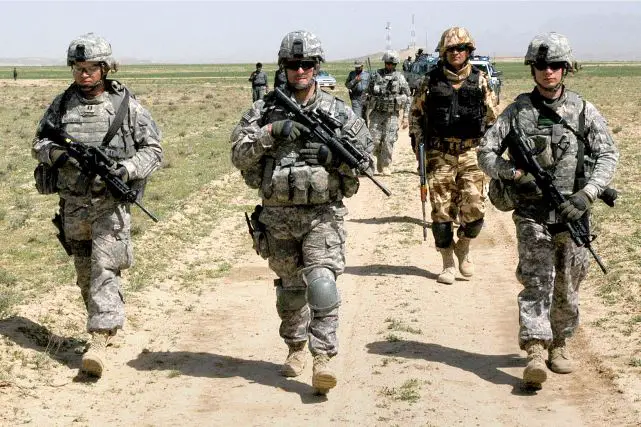| Eight
years after spending $5 billion on a heavily-criticized universal camouflage
pattern, the United States Army is back at the drawing board looking for
a new design that’s estimated to cost another $4 billion. In 2004,
the Army decided to scrap the two traditional camouflage uniforms that
had long been used by the military—one meant for woodland environments,
another for the desert—and claimed to have come up with a universal
pattern that could be worn anywhere and blend in with any environment.
(Source The Daily Beast) |
|
The $5 billion dollar experiment with the universal pattern is over as
the Army is phasing out the uniform after less than a decade of use. But
many soldiers and observers are wondering why it took this long and cost
this much to replace an item that performed poorly from the start during
a period when the money could have been spent on other critical needs,
like potentially life saving improvements to military vehicles and body
armor.
Less than a decade after the so-called Universal Camouflage Pattern, or
UCP, was introduced the Army is back to the drawing board, set to announce
a new camouflage pattern and standard uniform to be worn by the more than
million members of the active duty and reserve forces.
Evidence of the UCPs inadequacy as a combat uniform is easy to find—just
look at pictures of soldiers currently serving in Afghanistan, they’re
not wearing the UCP, which was deemed unsuitable for operations there,
but a different uniform known as the MultiCam. In 2009, Congress responded
to soldiers’ “concerns about the current combat uniform which
they indicated provides ineffective camouflage given the environment in
Afghanistan,” by passing a bill in the appropriations act requiring
that the DOD “take immediate action to provide combat uniforms to
personnel deployed to Afghanistan with a camouflage pattern that is suited
to the environment of Afghanistan.” The result was the MultiCam.
But that uniform, while it is currently worn in Afghanistan, was not a
replacement but an interim substitution for the UCP, which is still the
Army’s official uniform and the one worn by all soldiers not overseas.
During former Army Officer Matt Gallagher’s 15-month deployment
to Iraq from 2007-2009, he became well acquainted with the shortfalls
of the universal camouflage pattern. In an attempt to blend in with all
kinds of environments, the pattern instead wound up sticking out everywhere,
its grey, gravel design that only a help to soldiers hoping to blend in
with a parking lot. Gallagher said his soldiers would call the uniform
pajamas, “both a testament to its comfort and its inability to look
right on anyone, no matter their build.” But Gallagher found that
the biggest concern with the UCP in Iraq was shoddy velcro.
Last year, the Government Accountability Office, a federal watchdog agency,
issued a report taking the Army to task for spending $5 billion on UCP-covered
uniforms and field equipment, only to spend an estimated $4 billion replacing
them with whatever design it picks next. The Natick Army Soldier Systems
Center, which does research and development on things like food, clothing,
shelter for the military, conducted two studies on the Universal Camouflage
Pattern, once in 2006 and again in 2009, both times finding that the UCP’s
performance came up short when compared to other, more popular camouflages,
like the Marine Corps desert pattern or the MultiCam. Natick scientists
also went on record alleging that the Army had already selected the UCP
before testing on it was completed and a full evaluation could be made
of its performance compared to other designs.
Over the past decade the Army has utilized four different uniforms, with
each representing a considerable expenditure and investment of time and
resources that could have been applied to other commonly cited needs,
like upgrades to field equipment and improvements to tactical vehicles.
|



























